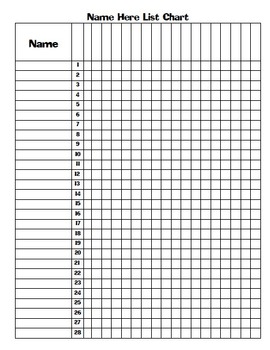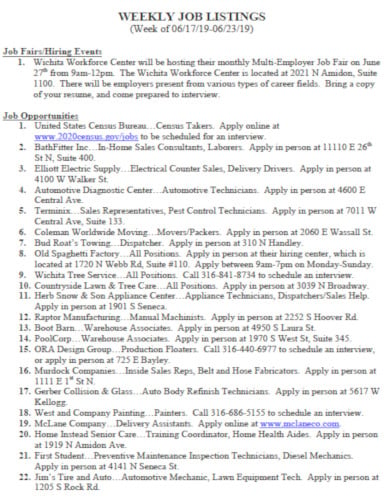

I have tested and every single color works. Please note that printing colors might not work for you but it does works the exact same as the other libraries that print colored text. TableIt.printTable(myList, useFieldNames=True, color=(26, 156, 171)) Using the example from above: import TableIt You use colors by using the color option ( by default it is set to None) and specifying RGB values. TableIt.printTable(myList, useFieldNames=True)Īnd from that you get: +-+ There are other uses to, for example you could do this: import TableItįrom that: +-+ TableIt.printTable(table, useFieldNames=True)įrom that you will get: +-+ You can use field names if you want to ( if you aren't using field names you don't have to say useFieldNames=False because it is set to that by default): Then all you have to do is print it: TableIt.printTable(table) Then make a list of lists where each inner list is a row: table = [
#Tabular list download
To use it, first follow the download instructions on the GitHub Page.

It is extremely simple, that's why I think you should use it. I know that I am late to the party, but I just made a library for this that I think could really help. asciitable Asciitable can read and write a wide range of ASCII table formats via built-in Extension Reader Classes.terminaltables Easily draw tables in terminal/console applications from a list of lists of strings.With texttable you can control horizontal/vertical align, border style and data types. texttable: from texttable import Texttable Also you are able to select subset of data, sort table and change table styles.ģ. PrettyTable has options to read data from csv, html, sql database. PrettyTable: from prettytable import PrettyTable print(tabulate(, ], headers=, tablefmt='orgtbl'))Ģ. Tabulate has many options to specify headers and table format. When a table is narrow - for example, if people can vary its width - you want content to remain recognizable and easy to read.There are some light and useful python packages for this purpose:ġ. For example, you could list item titles only, letting people choose an item to reveal its content in a detail view.Ĭonsider ways to preserve readability of text that might otherwise get clipped or truncated. If each item consists of a large amount of text, consider alternatives that help you avoid displaying over-large table rows. Short, succinct text can help minimize truncation and wrapping, making text easier to read and scan. Keep item text succinct so row content is comfortable to read. In contrast, a table that lists options often highlights a row only briefly before adding an image - such as a checkmark - indicating that the item is selected. In general, a table that enables navigation through a hierarchy persistently highlights the selected row to clarify the path people are taking. The feedback can vary depending on whether selecting the item reveals a new view or toggles the item’s state. Provide appropriate feedback when people select a list item. In iOS and iPadOS, people must enter an edit mode before they can select table items. People appreciate being able to reorder a list, even if they can’t add or remove items. Let people edit a table when it makes sense. If you have items that vary widely in size - or you need to display a large number of images - consider using a collection instead. A table can include any type of content, but the row-based format is especially well suited to making text easy to scan and read.

Prefer displaying text in a list or table. Apps that enable productivity tasks often use a table to represent various characteristics or attributes of the data in separate, sortable columns. Sometimes, people need to work with complex data in a multicolumn table or a spreadsheet. For example, iOS Settings uses a hierarchy of lists to help people choose options, and several apps - such as Mail in iPadOS and macOS - use a table within a split view. Apps and games in all platforms can use tables to present content and options many apps use lists to express an overall information hierarchy and enable navigation. Lists and tables present data in one or more columns of rows.Ī table or list can represent data that’s organized in groups or hierarchies, and it can enable user interactions like selecting, adding, deleting, and reordering.


 0 kommentar(er)
0 kommentar(er)
